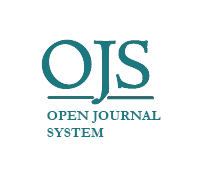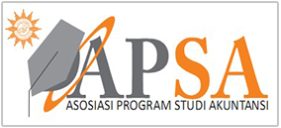Mengapa Perusahaan Manufaktur Di Indonesia Melakukan Keputusan Hedging?
DOI:
https://doi.org/10.22219/jrak.v13i1.21659Keywords:
Cash Flow Volatility, Financial Leverage, Growth Opportunities, Hedging, LiquidityAbstract
Purpose: This study aims to examine the factors that influence manufacturing companies in Indonesia to make hedging decisions
Methodology/approach: The study selected 179 companies as the population and 124 companies as a sample. The analysis unit used is a manufacturing company listed on the Indonesia Stock Exchange for the 2018-2020 observation year, so that the observation unit amounted to 372 observations. The study sample was selected using a simple random sampling technique. The source of this research data is secondary data obtained from the publication of the company's annual financial statements and analyzed using logistic regression.
Findings: The results showed that growth opportunities and financial leverage are factors that motivate company managers to make hedging decisions, while likiudity is a factor that mitigates managers to make hedging decisions. On the other hand, cash flow volatility is a factor that is unable to explain hedging decisions.
Practical implications: Practical implications in this study suggest that when making hedging decisions, manufacturing company managers should consider factors that influence hedging decisions, namely growth opportunities, financial leverage, and liquidity. Additionally, investors and creditors should also take into account variables or factors that influence manager decisions on hedging before deciding to invest or provide loans.
Originality/value: This study used simple random sampling techniques in determining research samples, in contrast to previous studies that used purposive sampling techniques. This aims to overcome the weaknesses of purposive sampling techniques that are not able to generalize results of study to the entire population.
Downloads
References
Affan, M., & Prasetiono. (2022). Pengaruh Liquidity, Firm Size, Growth Opportunity, Financial Distress , Dan Managerial Ownership Terhadap Keputusan Lindung Nilai (Hedging) Dengan Leverage Sebagai Variabel Moderating (Studi Empiris Pada Perusahaan Manufaktur Yang Terdaftar Di Bei Periode. Diponegoro Journal of Management, 11, 1–12. https://doi.org/https://ejournal3.undip.ac.id/index.php/djom/article/view/36556
Ali, A. I. (2017). Influence of financial determinants on corporate hedging of firm in Nairobi Securities Exchange. Jomo Kenyatta University of Agriculture and Technology.
Ameer, R. (2010). Determinants of corporate hedging practices in Malaysia. International Business Research, Vol 3(No 2), 119–130. https://doi.org/https://doi.org/10.5539/ibr.v3n2p120
Anniyati, H., Hermanto, H., & Hidayati, S. A. (2019). Pengaruh firm size, financial distress, debt level, dan managerial ownership terhadap keputusan hedging pada perusahaan manufaktur yang terdaftar di Bursa Efek Indonesia. Jmm Unram - Master of Management Journal, 9(1), 28–41.
Bartram, S. M. (2019). Corporate hedging and speculation with derivatives. Journal of Corporate Finance, 57, 9–34. https://doi.org/DOI: 10.1016/j.jcorpfin.2017.09.023
Bhagawan, P. M., & Lukose, J. P. . (2017). The determinants of currency derivatives usage among Indian non-financial firms: An empirical study. Studies in Economics and Finance, 34(3), 363-382. https://doi.org/DOI: 10.1108/SEF-09-2014-0172
Blach, J., Wieczorek-Kosmala, M., Gorczyńska, M., & Doś, A. (2014). Innovations in liquidity management– the potential of corporate treasury. Journal of Economics and Management, 18, 209–224.
Choi, Y. M., Park, K., & Kim, W. S. (2020). Corporate hedging and dividend policy: An empirical study of Korean firms. Finance Research Letters, 32, 1–14. https://doi.org/DOI: 10.1016/j.frl.2018.12.034
Dechow, P., & Dichev, I. D. (2002). The quality of accruals and earnings: The role of accrual estimation errors. The Accounting Review, 77(Suplement 2002), 35–59. https://doi.org/http://www.jstor.org/stable/3203324
Fakhruddin, H. M., & Darmadji, T. (2011). Pasar modal Indonesia (2 ed.). Salemba empat.
Froot, K. A., Scharfstein, D. S., & Stein, J. C. (1993). Risk management: Coordinating corporate investment and financing policies. The Journal of Finance, 48(5), 1629–1658. https://doi.org/https://doi.org/10.1111/j.1540-6261.1993.tb05123.x
Gay, G. D., & Nam, J. (1998). The underinvestment problem and corporate derivatives use. Financial Management, 27(4), 53.
Gewar, M. M., & Suryantini, N. P. S. (2020). The effect of leverage, managerial ownership, and dividend policy on hedging decisions in manufacturing companies. American Journal of Humanities and Social Sciences Research, 4(1), 382–389.
Guniarti, F. (2015). Faktor-faktor yang mempengaruhi aktivitas hedging dengan instrumen derivatif valuta asing. Jurnal Dinamika Manajemen, 5(1), 64–79. https://doi.org/DOI:10.15294/jdm.v5i1.3651
Hasim, R. P., & Holiawati. (2022). Effect of Cash Flow Volatility, Growth Opportunities, and Dividend Policy on Hedging Decisions. Marginal : Journal of Management, Accounting, General Finance and International Economic Issues, 1(4), 109–124. https://doi.org/https://doi.org/10.55047/marginal.v1i4.310
Henderson, C. (2006). Currency strategy: The practitioner’s guide to currency investing, hedging and forecasting (2nd ed.). John Wiley & Sons Ltd.
Jayanti, D. A. N., & Yadnya, I. P. (2020). The effect of leverage, liquidity and growth opportunity on hedging decision making in mining companies at Indonesia Stock Exchange. American Journal of Humanities and Social Sciences Research (AJHSSR), 4(12), 251–257.
Jensen, M. C., & Meckling, W. H. (1976). Theory of the firm: Managerial behaviour, agency cost, and ownership structure. Journal of Financial Economics, 3(4), 305–360. https://doi.org/https://doi.org/10.1016/0304-405X(76)90026-X
Jutila, A. (2020). The determinants of currency hedging. UNIVERSITY OF VAASA.
Karlinda, M. P. B., & Manunggal, S. A. M. (2023). Pengaruh leverage, firm size, profitabilitas, dan likuiditas terhadap pengambilan keputusan hedging perusahaan manufaktur di BEI. Jurnal Manajemen Bisnis dan Kewirausahaan, 7(2), 467–480. https://doi.org/https://doi.org/10.24912/jmbk.v7i2.23104
Larasati, A. A., & Wijaya, E. (2022). Determinasi Faktor-faktor Keputusan Hedging dengan Instrumen Derivatif pada Perusahaan Manufaktur. Jurnal Bisnis dan Manajemen, 9(2), 193–204. https://doi.org/https://doi.org/10.26905/jbm.v9i2.8853
Listiana, R., & Primasari, N. S. (2022). Pengaruh Market To Book Value, Liquidity, Leverage, Altman Z-Score, Firm Size, Dan Profitabilitas Terhadap Keputusan Hedging (Studi Kasus Perusahaan Dalam Daftar JII70 2018-2020). Jurnal Akuntansi & Keuangan, 13(2), 42–56.
Livingstone, K. T., & Ngugi, K. (2017). Determinants of corporate hedging practices used by companies. International Journal of Business Management & Finance, 1(5), 73–92.
Mahardini, N. Y., Suprihatin, N. S., & Nurzamzami, F. (2020). Does leverage, dividend per share, and cash flow volatility affect hedging decisions?: An empirical study on listed manufacturing companies. Journal of Accounting Auditing and Business, 3(2), 104. https://doi.org/https://doi.org/10.24198/jaab.v3i2.28736
Mahasari, A. A. K. R., & Rahyuda, H. (2020). The effect of firm size, leverage, and liquidity on hedging decisions of consumer goods industry on the Indonesia Stock Exchange. American Journal of Humanities and Social Sciences Research, 4(10), 106–113.
Mediana, I., & Muharam, H. (2016). Analisis faktor-faktor yang mempengaruhi pengambilan keputusan lindung nilai (hedging) menggunakan instrumen derivatif. Diponegoro Journal of Management, 5(2), 1–14. https://doi.org/https://ejournal3.undip.ac.id/index.php/djom/article/view/13844
Meridelima, E., & Isbanah, Y. (2021). Analisis faktor-faktor yang memengaruhi keputusan hedging perusahaan sektor industri pengolahan yang terdaftar di BEI tahun 2014-2018. Jurnal Ilmu Manajemen, 9(1), 112–128. https://doi.org/https://doi.org/10.26740/jim.v9n1.p112-128
Messo, R. J. O. (2016). Alternative method of mitigating risk on medium and large corporations. International Journal of Business and Management, 11(11), 164–174. https://doi.org/DOI:10.5539/ijbm.v11n11p164
Modigliani, F., & Miller, M. H. (1958). The cost of capital, corporation finance and the theory of investment. The American Economic Review, 48(3), 261–297. https://doi.org/http://www.jstor.org/stable/1809766
Monda, B., Giorgino, M., & Modolin, I. (2013). Rationales for corporate risk management - A critical literature review. SSRN Electronic Journal, 45420. https://doi.org/https://dx.doi.org/10.2139/ssrn.2203546
Myers, S. C. (1977). Determinants of corporate borrowing. Journal of Financial Management, 5(2), 147–175. https://doi.org/https://doi.org/10.1016/0304-405X(77)90015-0
Normalisa, Zul Azmi, & Siti Rodiah. (2021). Determinan Pengambilan Keputusan Hedging Pada Perusahaan Yang Terdaftar Di Bursa Efek Indonesia Periode 2017-2019. Sneba, 1, 155–168.
Oktavianti, H. Y. (2020). Pengaruh Struktur Modal, Profitabilitas, Volatilitas Arus Kas dan Likuiditas Terhadap Keputusan Lindung Nilai pada Perusahaan Manufaktur yang Terdaftar di Bursa Efek Indonesia Tahun 2014-2018. STIE Perbanas Surabaya.
Pitangga, S., & Puryandani, S. (2019). The influence of growth profitability, leverage and opportunity on hedging activities in state-owned enterprises companies 2012-2016. Advances in Economics, Business and Management Research, 86(Icobame 2018), 213–217. https://doi.org/DOI:10.2991/icobame-18.2019.46
Putri, M. S., & Sukarmanto, E. (2023). Pengaruh Financial Distress dan Growth Options terhadap Aktivitas Hedging. Bandung Conference Series: Accountancy, 3(1), 34–41. https://doi.org/DOI: https://doi.org/10.29313/bcsa.v3i1.5735
Riyanto, S., & Hatmawan, A. A. (2020). Metode riset penelitian kuantitatif penelitian di bidang manajemen, teknik, pendidikan dan eksperimen. Deepublish.
Sasmita, I. E., & Hartono, U. (2019). Karakteristik perusahaan, financial distress, dan keputusan hedging: Studi pada perusahaan manufaktur di Indonesia. Jurnal Ilmu Manajemen, 7(3), 655–667.
Sekaran, U., & Bougie, R. (2018). Metode penelitian untuk bisnis (6 ed.). Salemba empat.
Seng, C. K., & Thaker, H. M. T. (2018). Determinants of corporate hedging practices: Malaysian evidence. Reports on Economics and Finance, 4(4), 199–220. https://doi.org/DOI:10.12988/ref.2018.8418
Seok, S. I., Kim, T. H., Cho, H., & Kim, T. J. (2020). Determinants of hedging and their impact on firm value and risk: After controlling for endogeneity using a two-stage analysis. Journal of Korea Trade, 24(1), 1–34. https://doi.org/https://doi.org/10.35611/jkt.2020.24.1.1
Septiana, A. (2019). Analisis laporan keuangan, konsep dasar dan deskripsi laporan keuangan. Duta Media.
Smith, C. W., & Stulz, R. M. (1985). The determinants of firms’ hedging policies. The Journal of Financial and Quantitative Analysis, 20(4), 391–405. https://doi.org/https://doi.org/10.2307/2330757
Sugeng, B. (2017). Manajemen keuangan fundamental (1 ed.). Deepublish.
Sulindawati, N. L. G. E., Yuniarta, G. A., & Purnamawati, I. G. A. (2017). Manajemen keuangan: Sebagai dasar pengambilan keputusan bisnis (1 ed.). Rajagrafindo Persada.
Ulfah, F. U. (2020). Dolar sentuh Rp16.000, begini strategi Tower Bersama (TBIG), Bukit Asam (PTBA) dan Adaro (ADRO) kelola utang. Bisnis.com. https://market.bisnis.com/read/20200322/192/1216544/dolar-sentuh-rp16.000-begini-strategi-tower-bersama-tbig-bukit-asam-ptba-dan-adaro-adro-kelola-utang
Velasco, G. L. (2014). Factors influencing derivatives usage by selected listed companies in the Philippines. Philippine Management Review, 21(2002), 1–12. https://doi.org/https://www.researchgate.net/publication/353972362
Vural-Yavas, C. (2016). Determinants of corporate hedging: Evidence from emerging market. International Journal of Economics and Finance, 8(12), 151. https://doi.org/DOI:10.5539/ijef.v8n12p151
Wahyudi, S., Goklas, F., Rita, M. R., Hersugondo, H., & Laksana, R. D. (2019). The determinants of corporate hedging policy: A case study from Indonesia. International Journal of Economics and Business Administration, 7(1), 113–129. https://doi.org/DOI:10.35808/ijeba/199
Wijayani, D. R., & Harsanti, P. (2020). Determinant of hedging activities in SOE companies listed in Indonesia Stock Exchange period 2015-2019. Jurnal Riset Akuntansi Dan Bisnis Airlangga, 5(1), 800–817. https://doi.org/DOI:10.31093/jraba.v5i1.205
Windari, I. G. M., & Purnawati, N. K. (2019). Pengaruh leverage, ukuran perusahaan, dan likuiditas terhadap keputusan hedging pada perusahaan manufaktur terdaftar Di BEI. E-Jurnal Manajemen Universitas Udayana, 8(8), 4815–4840. https://doi.org/doi.org/10.24843/EJMUNUD.2019.v08.i08.p04
Downloads
Published
Issue
Section
License
Copyright (c) 2023 Arinal Mirdha, Muhammad Arfan, Indayani

This work is licensed under a Creative Commons Attribution-NonCommercial-ShareAlike 4.0 International License.

Jurnal Reviu Akuntansi dan Keuangan is licensed under a Creative Commons Attribution-NonCommercial-ShareAlike 4.0 International License.
Authors who publish with this journal agree to the following terms:
- Authors retain copyright and grant the journal right of first publication with the work simultaneously licensed under a Creative Commons Attribution-NonCommercial-ShareAlike 4.0 International License that allows others to share the work with an acknowledgement of the work's authorship and initial publication in this journal.
- Authors are able to enter into separate, additional contractual arrangements for the non-exclusive distribution of the journal's published version of the work (e.g., post it to an institutional repository or publish it in a book), with an acknowledgement of its initial publication in this journal.
- Authors are permitted and encouraged to post their work online (e.g., in institutional repositories or on their website) prior to and during the submission process, as it can lead to productive exchanges, as well as earlier and greater citation of published work (See The Effect of Open Access).










